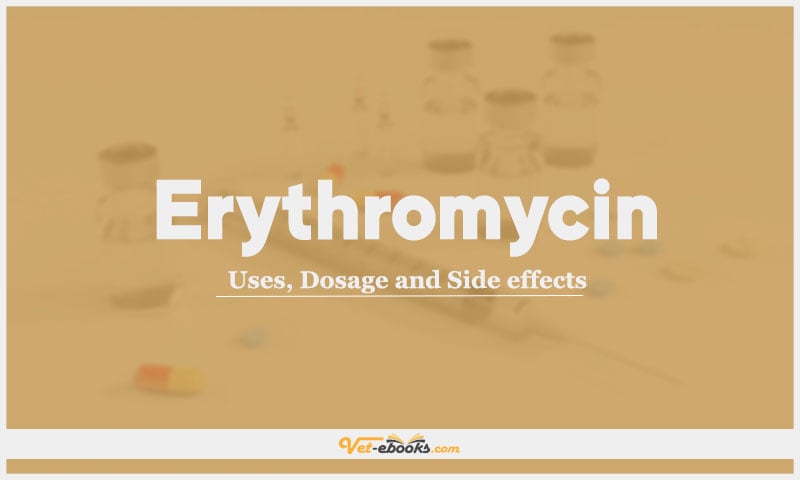Erythromycin: Uses, Dosage and Side Effects

Overview
- Time-dependent macrolide antibacterial that binds to the 50S ribosome (close to the binding site for chloramphenicol), inhibiting peptide bond formation.
Uses of Erythromycin
Not commonly used in dogs and cats.
- Has a similar antibacterial spectrum to penicillins.
- It is active against Gram-positive cocci (some Staphylococcus species are
resistant), Gram-positive bacilli and some Gram-negative bacilli (Pasteurella). - Some strains of Actinomyces, Nocardia, Chlamydophila and Rickettsia are also inhibited by erythromycin.
- Most of the Enterobacteriaceae (Pseudomonas, Escherichia coli, Klebsiella) are resistant.
- It may be considered to treat canine enteric Campylobacter, although isolation rates are similar between healthy dogs and those with diarrhoea.
- Being a lipophilic weak base, it is concentrated in fluids that are more acidic than plasma, including milk, prostatic fluid and intracellular fluid.
- Resistance to erythromycin can be quite high, particularly in staphylococcal organisms.
- Erythromycin acts as a GI prokinetic by stimulating motilin receptors.
Dose of Erythromycin in Dogs and Cats
Dogs, Cats:
• Antibiosis: 10–20 mg/kg p.o. q8–12h.
• GI prokinetic: 0.5–1 mg/kg p.o. q8h.
Drug Dosage Calculator
You Should Give:
Side Effects of Erythromycin in Dogs and Cats
- The commonest adverse effect is GI upset.
- Care should be taken in cases of hepatic or renal impairment.
Contraindications of Erythromycin in Dogs and Cats
- Should be avoided in animals with hepatic dysfunction.
Some Notes:
- Erythromycin may enhance the absorption of digoxin from the GI tract and increase serum levels of ciclosporin, cisapride, methylprednisolone, theophylline and terfenadine.
- The interactions with terfenadine and cisapride proved particularly significant in human medicine, leading to fatal or near-fatal arrhythmias in some patients receiving both drugs.
- Erythromycin should not be used in combination with other macrolide, lincosamide or chloramphenicol antimicrobials as antagonism may occur.
Tip
Do You Want To Increase Your Veterinary Knowledge and Practical Skills?
You Can Now Browse and Download +3000 Books For Veterinary Professionals & Students Online.
Download Veterinary Books



















